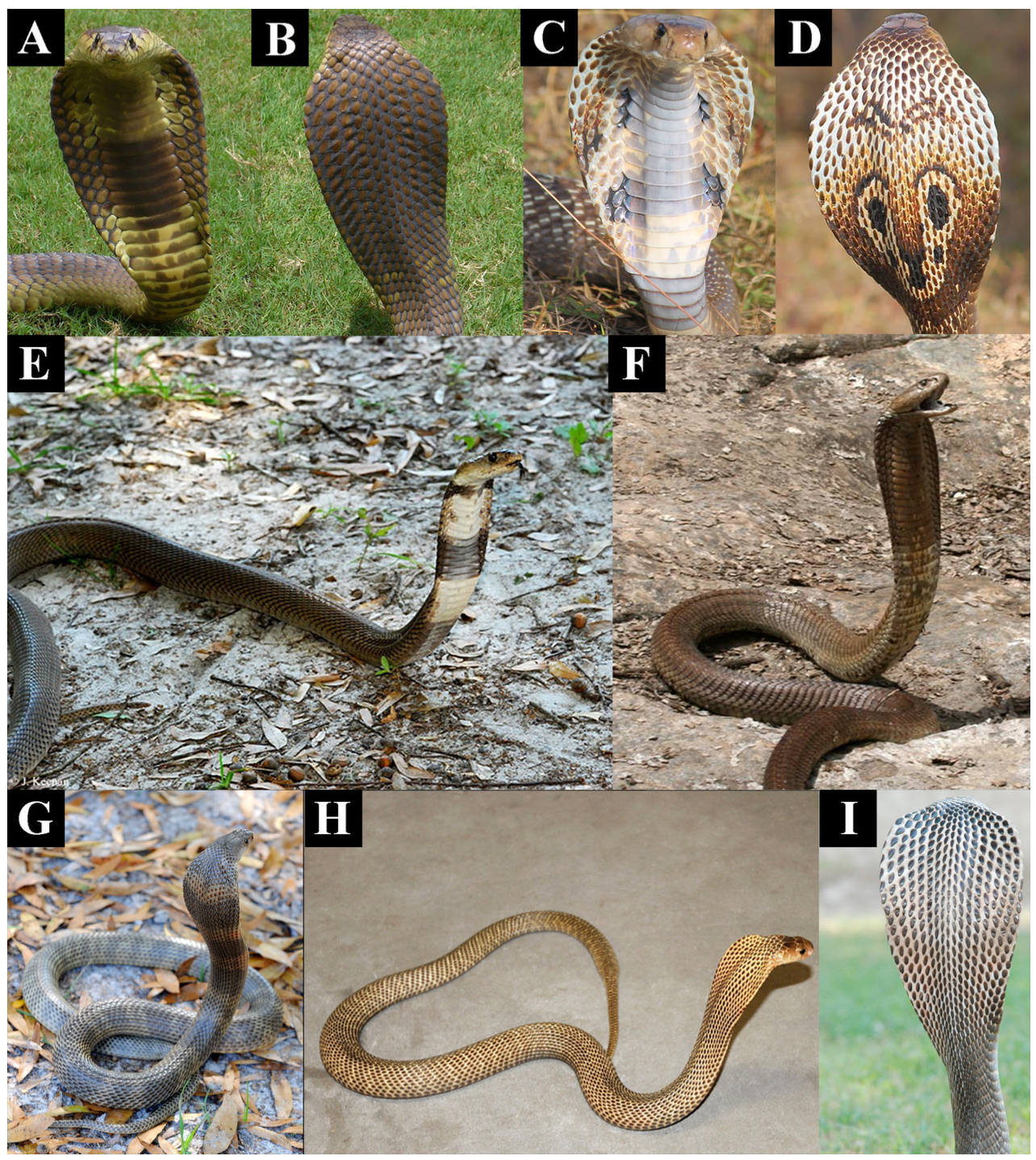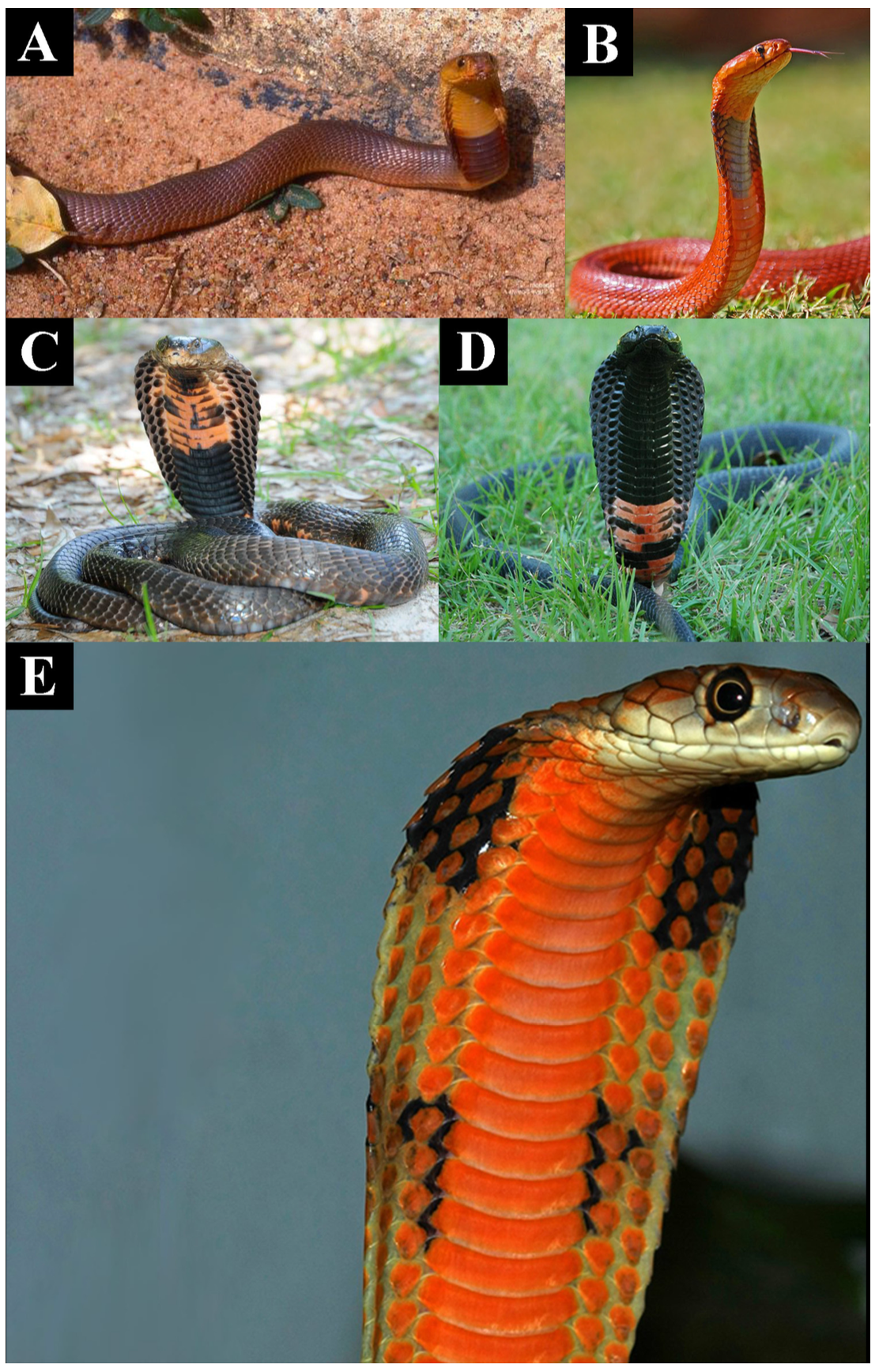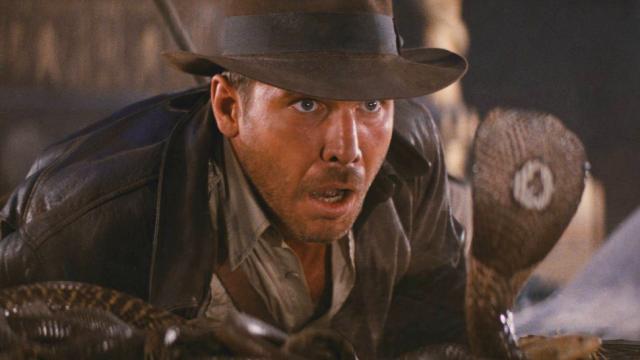Cobras are renowned for their devastating flesh-eating venom, and the dramatic way they rear their heads upwards to flare their hoods. New research clarifies the purpose of these tactics and how they emerged among cobras — insights that could help scientists develop more powerful anti-venoms, and help you spot an especially deadly cobra before it’s too late.
A new study published in the science journal Toxins explores how cobras developed their potent venoms, which are used for both predation and defence, and how the strength of this deadly substance can be linked to their dramatic hooding behaviour and striking visual appearance. In addition to shedding light on cobra evolution and behaviour, these findings could lead to improved anti-venoms, and possibly new medicines to treat cancer.

An example of the variation among cobras. (Image: N. Panagides et al., 2017/Toxins)
There are over 270 cobra species spread throughout Africa and Asia, and they exact a terrible toll on their animal and human victims. Their venom, which is delivered by either biting or spitting, can cause extreme pain, blindness, respiratory failure, possible amputation of limbs, and even death. But while the potency of cobra venom is well known, the evolutionary story behind the cobra’s unique weapon has remained a mystery. Scientists aren’t entirely sure if the venom — a flesh-devouring “cytotoxin” — serves a defensive purpose, or if it evolved for prey capture. The new research, led by Bryan Fry from the University of Queensland, attempts to answer these questions.
For the study, Fry’s team analysed the venoms of nearly 30 cobra species and related snakes, while also performing a genetic analysis on each snake. The researchers found that flesh-eating venom evolved in tandem with the cobra’s distinctive hoods; as the venom got stronger over time, the displays got more elaborate. What’s more, the more toxic the venom, the more inclined the cobra is to rear upwards and flare its hood. As it evolved, cobra venom became increasingly potent in parallel to its other warning strategies, such its ornate hood markings, body bandings, red colouring, and spitting. Eventually, the potency of the venom, plus the rearing behaviour, led to the rise of spitting cobras.

The cobra’s dramatic hood and its colouring is a defensive signal that basically says, “Back off or die.” (Image: N. Panagides et al., 2017/Toxins)
“Their spectacular hoods and eye-catching patterns evolved to warn off potential predators because unlike other snakes, which use their venom purely for predation, cobras also use it in defence,” said Fry in a statement. “For the longest time it was thought that only spitting cobras had these defensive toxins in high amounts in their venoms, however we’ve shown that they are widespread in cobras.”
The potency of a cobra’s venom evolved primarily as a defence mechanism, and it emerged twice alongside hooding behaviour — once in the ring-necked spitting cobra and “true” cobras, and again, independently, in king cobras.
As this research suggests, these traits evolved hand-in-hand — the venom acting as the bona fide defensive measure, and the hooding behaviour and markings serving as warning. Without deadly venom to back it all up, the cobra’s gestures would stand for nothing against its natural predators, such as mongooses and large birds of prey. Yes, its venom is deadly, but a cobra stands a better chance of surviving an encounter if its enemy simply backs off.
As noted, the researchers say spitting behaviour emerged among an offshoot of cobras as a result of the venom’s toxicity, and as a result of the hooding behaviour. Spitting evolved three times within cobras, in the ring-necked spitting cobra and also in both the African and Asian “true” cobras. Meanwhile, the water cobra, Naja annulata, lost its hooding abilities and its flesh-destroying venom when it adapted to the water, but it developed a different kind of weapon — a neurotoxic venom, similar to those of other aquatic sea snakes.
The next step for the researchers is to perform anti-venom testing. Fry says that snakebites are among the most neglected of all tropical diseases, and that anti-venom manufacturers are leaving the market in favour of producing cheaper and more profitable products.
“Anti-venom is expensive to make, has a short shelf life and a small market located in developing countries,” he said. “Therefore, we need to do further research to see how well those remaining anti-venoms neutralise not only the toxins that kill a person, but also those that would cause a severe injury.”
Encouragingly, this line of research could also lead to possible cancer treatments. The flesh-destroying attributes of cobra venom, which targets and destroys certain tissue types over others, could be set against problematic tumours.
“These chemicals may lead to new cancer treatments if we can find ones that are more potent to cancer cells than normal healthy cells,” says Fry. “Cobras are a rich resource of novel compounds in this way so there may ultimately be a silver lining to this very dark cloud.”
[Toxins]
